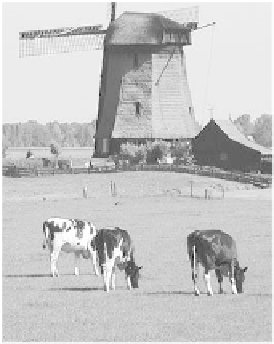Travel Reference
In-Depth Information
tHE
nEtHErLAndS
Holland: windmills, wooden shoes, cheese, tulips, and tranquility.
In its 17th-century glory days, tiny Holland was a world power—
politically, economically, and culturally—with more great artists
per square mile than any other country.
Today, the Netherlands is Europe's most densely populated
country and also one of its wealthiest and best organized. In
1944, the neighboring countries of Belgium, the Netherlands, and
Luxembourg became the nucleus of a united Europe when they
joined economically to form Benelux.
The average income in the Netherlands is higher than in the
United States. Though only 8 percent of the labor force is made up
of farmers, 70 percent of the land is cultivated, and—if you venture
outside of Amsterdam—you'll travel through vast fields of barley,
wheat, sugar beets, potatoes, and flowers.
“Holland” is just a nickname for the Netherlands. North
Holland and South Holland are the largest of the 12 provinces
that make up the Netherlands. The word Netherlands means
“lowlands,” and the country is so named because half of it is
below sea level, reclaimed from the sea (or rivers or lakes). That's
why the locals say, “God made the Earth, but the Dutch made
Holland.” Modern technology and plenty of Dutch elbow grease
have turned much of the sea into fertile farmland. Though a new
province—Flevoland, near Amsterdam—has been drained, dried,
and populated in the last 100 years, Dutch reclamation projects are
essentially finished. But in this era of global warming and rising
sea levels, the Dutch are developing plans to upgrade their dikes
and bulk up their beaches to hold back the sea. They also continue
to be innovative, building floatable homes and greenhouses (which
rise with the tides) and relocating dikes farther back from the
rivers (to create wider floodplains).


















